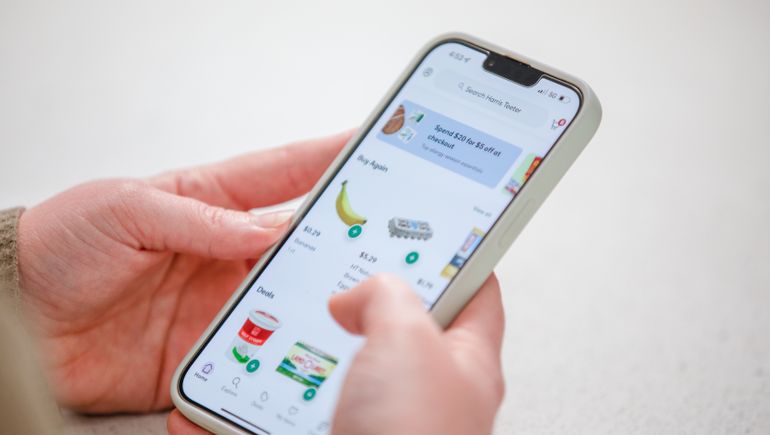Back to Basics is a monthly series that outlines how c-store operators can get valuable new services up and running.
Mobile apps can drive traffic into c-stores and increase loyalty — but they’re not for every operator.
Operators tying mobile apps to their customer rewards program can greatly benefit, as loyalty members spend about 38% more on average than non c-store loyalty members, according to customer experience vendor Paytronix.
While around 90% of the top 200 c-store retailers have mobile apps, according to Jeffry Harrison, co-founder and president of Rovertown, a mobile app platform for retailers, not every small, independent c-store operator needs to have an app.
“For independent c-store operators, an app can provide value if done right, but still remains a want rather than a need,” Harrison said.
For independents, the store experience — including customer service, cleanliness, and ensuring everything is in good working order — should be the top priority, echoed Brandon Lawrence, founder of Fuel Insight. “If that is not number one, an app should not even be on your radar,” Lawrence explained.
Weighing the pros and cons
C-store operators looking to establish a mobile app should first consider the costs versus the benefits. The average cost of developing an app varies widely depending on the level of integrations needed, Harrison said, but a quality app can range from $5,000 to $50,000 to build initially.
Independents excel at building relationships with customers one-on-one in their stores, and apps don’t necessarily provide that personal experience or increased sales that independents are seeking, according to Lawrence. “Is that really something you want to spend $25,000 on, when that money could have been better spent going through the stores and getting them painted and clean?” he asked.
However, “If an app would provide enough value to your retail experience to drive new habits, it may be an avenue worth exploring,” Lawrence noted. “It should be the most valuable place to spend your next dollar.”
Some apps can provide scan-and-go checkout or additional product info.
Courtesy of Shopreme
There are a number of benefits for independent operators who are ready to develop and maintain their apps. Retailers with five or more locations should have an app to tap into valuable tobacco funding, provide mobile coupons, and increase loyalty and sales, Harrison said, noting that retailers with this many locations and up achieve valuable economies of scale.
R.J. Reynolds and Altria, for example provide funding to promote age-restricted offers on retailers’ apps. “Eighty percent of our retailers are taking advantage of [these] mobile tobacco offers,” Harrison said.
Operators that invest in an app should provide benefit to the end user and be prepared to be actively involved in maintaining the app. “In today’s environment, it’s not good enough to just have an app. It needs to drive specific value to the end user and it needs to be dynamic, not static,” Harrison said.
Due to the cost, independents only have one chance to make a mobile app a success, according to Harrison. As a result, they need to be aggressive with initial app coupons, rewards offers and the like.
“Because it’s on a smartphone app, you can always dial back the coupons and offers in a matter of seconds if you have a line out the door. We see a lot of success with contests as well,” Harrison noted.
The app needs to be accretive to the customer experience, Lawrence agreed. “What is that value proposition for customers…. that is going to drive conversion and stickiness?” Customers will forget they have the app on their phone unless they are prompted, he added.
To sport a dynamic app, update app content monthly, Harrison advised. Retailers should also offer a weekly coupon and games, utilize GIFs and videos and highlight local events and charities they support.
Refining the technology
The design and functionality of the app needs to be able to compete with large, professional apps. A c-store app is not gong to be compared to other c-store apps, Lawrence said. Instead, it is going to be competing with every other app on a customer’s phone, such as Facebook and Amazon.
“That is the bar; that is going to be the impression of your brand. Do you really want the app that you put together for $30,000… to be the impression of your brand on a day in day out basis?” Lawrence said.
App quality can make or break an experience, according to Lawrence. “Nobody wants another machine on their phone. If you’re pushing five emails a day and a ton of notifications, people are just going to be annoyed,” he said.

Small operators may only get one shot at a successful app rollout, so they need to make it count.
Tero Vesalainen/iStock via Getty Images
C-stores should also consider utilizing an app platform to develop their app, according to experts.
Traditionally, c-store retailers sign up with one of the loyalty companies in the industry and are given a white label loyalty app for free along with their digital rewards program, Harrison explained. “This is a big mistake for retailers because your app will have limited functionality and only have one purpose: loyalty.”
Vendors that offer “white label” apps do not typically specialize in app development, so they don’t make it a priority to integrate with a wide range of necessary technologies, Rovertown said in its The Dawning of the Digital Convenience Store white paper. “They typically fail to keep pace with consumer demands for the app environment itself and present a subpar user experience and user interface,” the firm noted.
White-label apps also make it difficult for the retailer to make changes. “If they want something that isn’t within the scope of what’s offered, then the retailer either has to go without or pay expensive development costs from companies that specialize in modifying white-label apps,” Rovertown said.
And, because it’s very expensive and time-consuming to build a custom app from scratch — either by the retailer or in partnership with an agency — an app platform is the right solution for most retailers, Harrison said. “Think of an app platform as a website builder such as Wix, SquareSpace, WordPress, etc., but for mobile app development. [Functions include] drag and drop, real time updates, and the ability to be agnostic and plug into any service.”
Retailers work hard to create brands that are seen as unique and distinct from their competitors, Rovertown said. “White-label apps take the opposite approach.”



